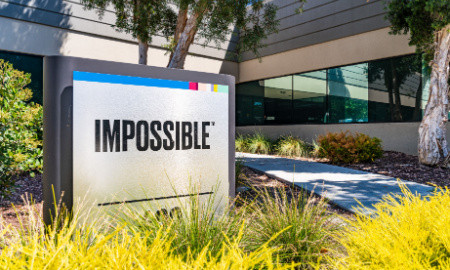Sign up for our free daily newsletter
YOUR PRIVACY - PLEASE READ CAREFULLY DATA PROTECTION STATEMENT
Below we explain how we will communicate with you. We set out how we use your data in our Privacy Policy.
Global City Media, and its associated brands will use the lawful basis of legitimate interests to use
the
contact details you have supplied to contact you regarding our publications, events, training,
reader
research, and other relevant information. We will always give you the option to opt out of our
marketing.
By clicking submit, you confirm that you understand and accept the Terms & Conditions and Privacy Policy
In November 2021, Vans alleged that Walmart infringed its intellectual property rights (IPR) by selling low quality copies of many of its best-known shoes, including the iconic ‘Sk8-Hi’ high-tops, ‘Old Skool’ low-tops and ‘Checkerboard Slip-Ons’.
Vans filed an action in the District Court of California against Walmart for trademark and trade dress infringement, unfair competition and false designation of origin, seeking remedies including a preliminary injunction for the immediate ceasing of Walmart’s sales of the infringing shoes, and pending the outcome of a final judgment, disgorgement of profits, punitive damages and final injunctive relief.
Walmart actively marketed and sold its copies priced between $10 – $20 a pair, in contrast to the genuine articles which, depending on the style, usually retail for between $160 for Sk8-His, $110 for Old Skool low-tops and $80 for Checkerboard Slip-Ons.
The case (Vans Inc v. Walmart Inc, U.S. District Court for the Central District of California, No. 8:21-cv-01876) was due to go before the court in November this year but the parties settled the dispute privately, jointly filing a notice of settlement on 8 November. A consented permanent injunction was handed down by Judge David O. Carter on 14 November, reflecting the terms of the settlement (including a ban for Walmart in respect of an extensive list of 46 pairs of infringing shoes as well as additional restrictions on any products with similarities to Vans IPR).
There are three points of particular interest in this case, all of which suggest that if this action had been brought in the UK, comparable decisions may have been made.
Remedies – US vs. UK
An order for the disgorgement of profits requires the defendant to give up the wrongfully acquired gains to the claimant and is often used as an alternative remedy to compensatory damages where it is difficult to accurately quantify the claimant’s financial losses.
In the UK the rough equivalent would be an application for an Account of Profits. This is an equitable remedy under UK law where the defendant has profited from a wrong at the expense of the claimant.
Punitive damages have punishment as their primary aim and go beyond the usual principle of damages which focuses on compensating the aggrieved party. In the US, courts may make the choice to award punitive damages where the defendant’s actions are deemed to be especially harmful and involved intentionally unlawful activities. In this case, Walmart’s social media activities may have been used to support the argument for making such an award – for example, this Christmas tweet from the Walmart Elves:

The UK courts may also award punitive damages (also called exemplary, retributory or vindictive damages). In a similar way, such awards seek to punish the wrongdoer rather than compensate the wronged party, but only where the defendant’s actions have been deemed oppressive or unconstitutional.
Preliminary/interim injunction
On filing its claim, Vans sought and was granted a preliminary injunction (often called an interim or interlocutory injunction in the UK). In the US, a preliminary injunction may be granted where the claimant demonstrates a likelihood of success in its case for infringement and that without such an injunction, it would “suffer irreparable harm”.
In the UK, the court decides whether to exercise its discretion to grant such injunctions by applying the American Cyanamid Co v Ethicon Ltd guidelines and asking:
- Is there a serious question to be tried? This is not an assessment of the evidence, but rather, an examination of whether the claimant has any real prospect of success: is there a case to be made by the claimant and one to be answered by the defendant?
- Would damages be an adequate remedy? If the allegedly infringing activity was allowed to continue inflicting damage on the claimant until the case can be determined, would a financial award of those damages provide an acceptable remedy? If so, then the injunction is unlikely to be appropriate. If not, then the court must decide whether, if the defendant is injuncted but later found innocent of infringement, those losses can be adequately remedied by the claimant giving a cross-undertaking in damages. If not, the court must also look more widely at the balance of inconvenience between the parties.
- Who does the balance of convenience favour? The court must assess the respective inconveniences of granting vs. not granting the injunction. Which is the lesser evil? “Will it do less harm to grant an injunction which subsequently turns out to be unjustified, or to refuse one if it subsequently turns out that an injunction should have been granted.”
- Are there any special factors to consider? Even if the preceding questions are answered in favour of granting or not granting the injunction, this catch-all allows for any case-specific factors to be evaluated.
There are differences between the assessments made by the US and UK courts when it comes to preliminary/interim injunctions, but when applied to the facts of this case, it seems likely that an equivalent interim injunction would have been granted in the UK, especially as the specifics of the injunction were reflected in, and justified by, the terms of the consented permanent injunction.
Settlement on the court steps
While cases don’t often literally settle on the court steps, parties do frequently wait until the last possible moment to propose or accept the final settlement terms. ‘Playing chicken’ with the impending deadline of the hearing is usually the reason for such last-minute settlements commonly used as a tactic by both parties – trying to leverage the disadvantages of going ahead with the hearing, against the advantages of settlement.
Most disputes that make it all the way to a court hearing are those without an obvious outcome. In these cases, both parties believe they have reasonable grounds to expect that they would be at least partially successful before a judge. These cases often involve complex legal matters lacking clear precedent case law and concern questions that require judiciary input and analysis. However, leaving the decision to the judge involves risk:
- Uncertainty of outcome.
- Loss of autonomy.
- Loss of confidentiality (as the judgment will be a public document).
- Threat to the legal standing of the proprietary rights that are the subject matter of the dispute. If the parties can avoid this by reaching an agreeable settlement they often will.
Late settlement often happens where the parties involved are of the same size and financial standing. Where there is a significant disparity between the parties however, even if the smaller party has the stronger claim in law (whether as claimant or defendant) the financial demands of litigation may result in them being pushed into early settlement or surrender. In the UK, the Intellectual Property and Enterprise Court (IPEC) was established with the objective of reducing the cost of IP litigation to level the playing field and widen access to justice for SMEs by enabling smaller businesses and even individuals to both enforce their own proprietary rights and to defend themselves in a significantly more cost-effective court system.
Emma Kennaugh-Gallacher is a professional support lawyer for the legal and trademark practice groups at IP firm Mewburn Ellis.
Email your news and story ideas to: [email protected]











